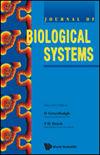MODELING THE ROLE OF VACCINATION, ENVIRONMENTAL SANITATION, AND SATURATED TREATMENT ON THE SPREAD OF TYPHOID FEVER
IF 1.5
4区 数学
Q3 BIOLOGY
引用次数: 0
Abstract
A deterministic nonlinear mathematical model is developed for typhoid transmission dynamics in human hosts, coupled with multiple transmission routes. The model aims to examine the role of control interventions such as vaccination, environmental sanitation, and saturated treatment on the prevalence of typhoid. First, the qualitative analysis of the model with constant control interventions is performed. The model exhibits a backward bifurcation phenomenon. Sensitivity analysis is also conducted to identify impactful parameters for effective control of the disease. Then, the model is extended to a corresponding optimal control problem to investigate the optimum intervention strategies by assessing their effects on typhoid prevalence and economic load. The characterization of the optimal controls is determined using Pontryagin’s Maximum Principle, and the optimality system is developed. Numerical results suggest that, in the absence of treatment, the combination of vaccination and environmental sanitation controls plays an important role in reducing the typhoid burden and economic load. Moreover, the comprehensive use of the three control interventions is more effective than using any single or two combined control interventions. It reduces the number of infective humans and environmental bacteria as well as the cost burden associated with applied controls and opportunity loss. Thus, the comprehensive effect of the three control interventions is found to be more economical during typhoid outbreaks.模拟疫苗接种、环境卫生和饱和处理对伤寒传播的作用
针对伤寒在人类宿主中的传播动力学,建立了一个确定性非线性数学模型,并结合多种传播途径。该模型旨在检验疫苗接种、环境卫生和饱和治疗等控制干预措施对伤寒流行率的作用。首先,对具有恒定控制干预的模型进行了定性分析。该模型呈现出后向分叉现象。还进行了敏感性分析,以确定有效控制疾病的有效参数。然后,将模型扩展到相应的最优控制问题,通过评估其对伤寒流行率和经济负荷的影响来研究最优干预策略。利用庞特里亚金最大值原理确定了最优控制的特征,并建立了最优性系统。数值结果表明,在没有治疗的情况下,疫苗接种和环境卫生控制的结合在减轻伤寒负担和经济负担方面发挥着重要作用。此外,综合使用三种控制干预措施比使用任何单一或两种联合控制干预措施更有效。它减少了感染人类和环境细菌的数量,以及与应用控制和机会损失相关的成本负担。因此,在伤寒爆发期间,三种控制干预措施的综合效果更为经济。
本文章由计算机程序翻译,如有差异,请以英文原文为准。
求助全文
约1分钟内获得全文
求助全文
来源期刊
CiteScore
2.80
自引率
12.50%
发文量
31
审稿时长
1 months
期刊介绍:
The Journal of Biological Systems is published quarterly. The goal of the Journal is to promote interdisciplinary approaches in Biology and in Medicine, and the study of biological situations with a variety of tools, including mathematical and general systems methods. The Journal solicits original research papers and survey articles in areas that include (but are not limited to):
Complex systems studies; isomorphies; nonlinear dynamics; entropy; mathematical tools and systems theories with applications in Biology and Medicine.
Interdisciplinary approaches in Biology and Medicine; transfer of methods from one discipline to another; integration of biological levels, from atomic to molecular, macromolecular, cellular, and organic levels; animal biology; plant biology.
Environmental studies; relationships between individuals, populations, communities and ecosystems; bioeconomics, management of renewable resources; hierarchy theory; integration of spatial and time scales.
Evolutionary biology; co-evolutions; genetics and evolution; branching processes and phyllotaxis.
Medical systems; physiology; cardiac modeling; computer models in Medicine; cancer research; epidemiology.
Numerical simulations and computations; numerical study and analysis of biological data.
Epistemology; history of science.
The journal will also publish book reviews.

 求助内容:
求助内容: 应助结果提醒方式:
应助结果提醒方式:


